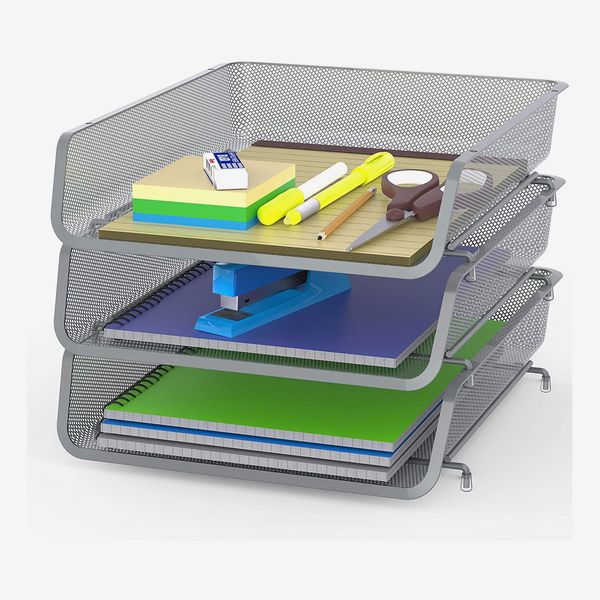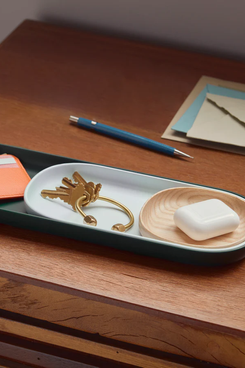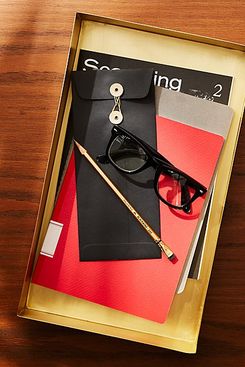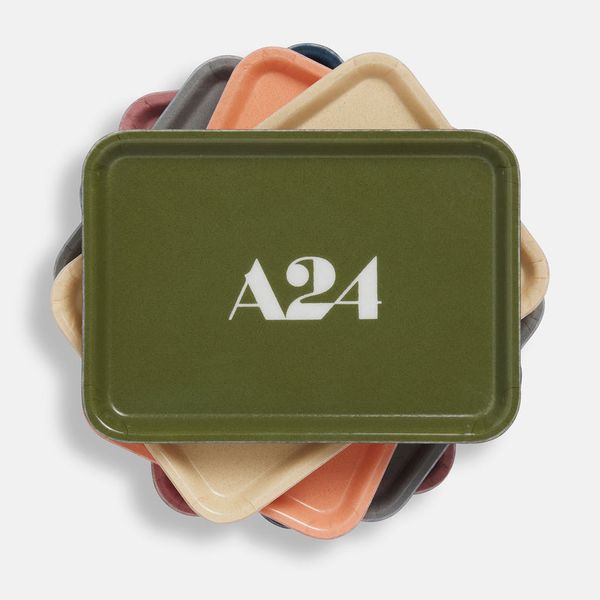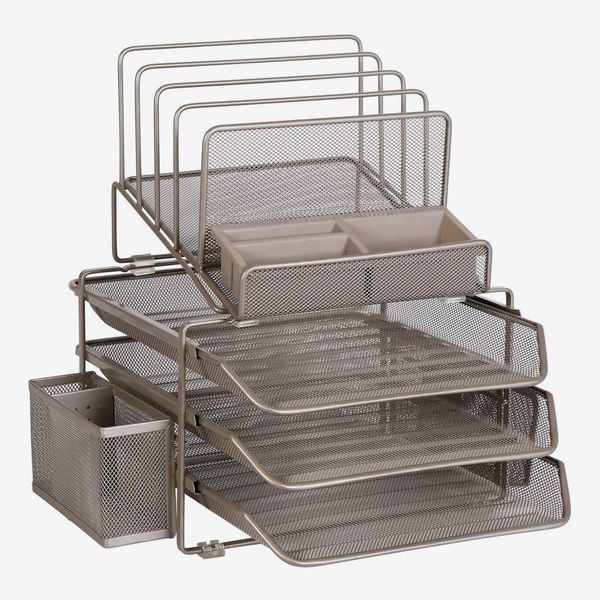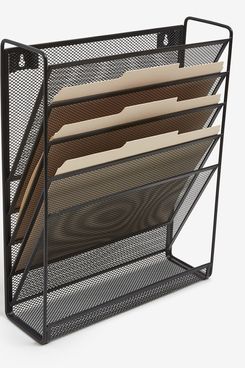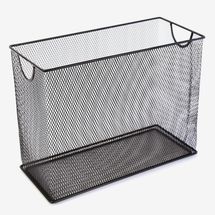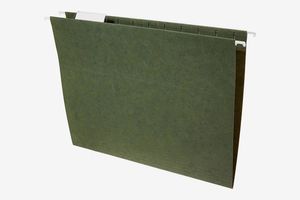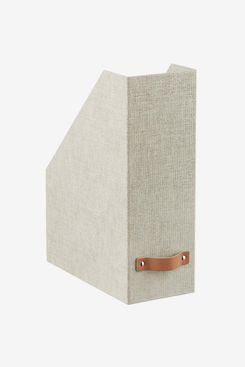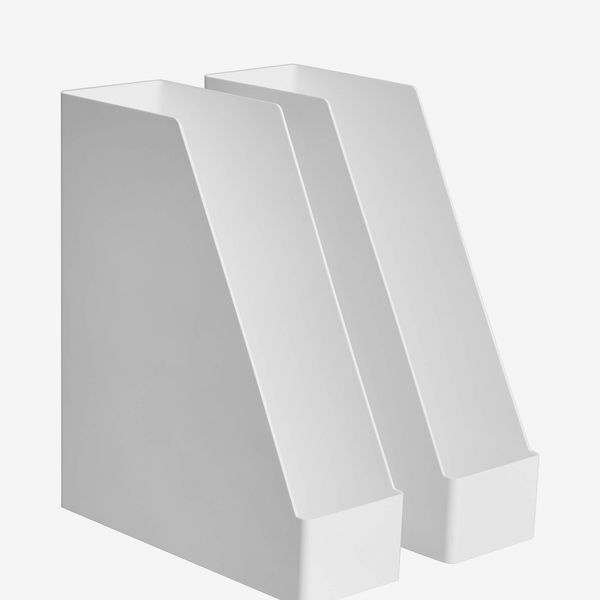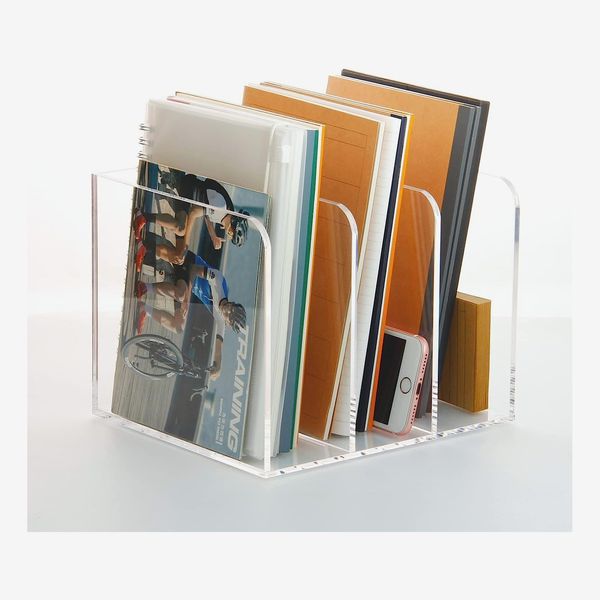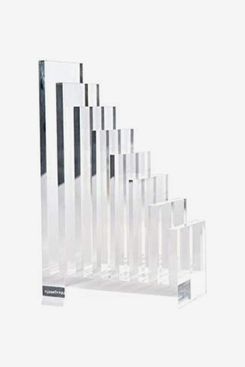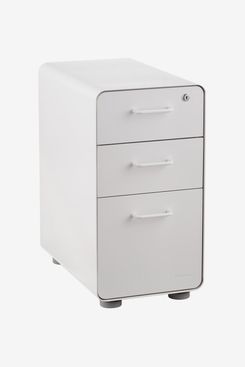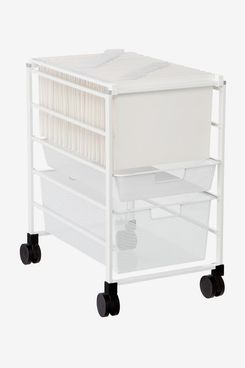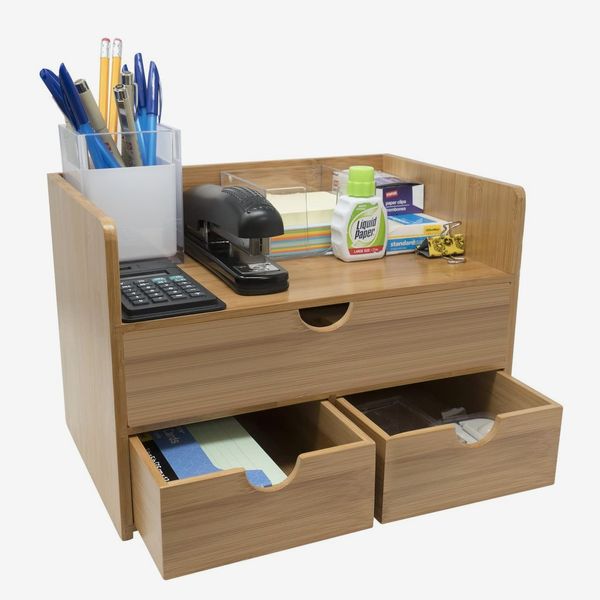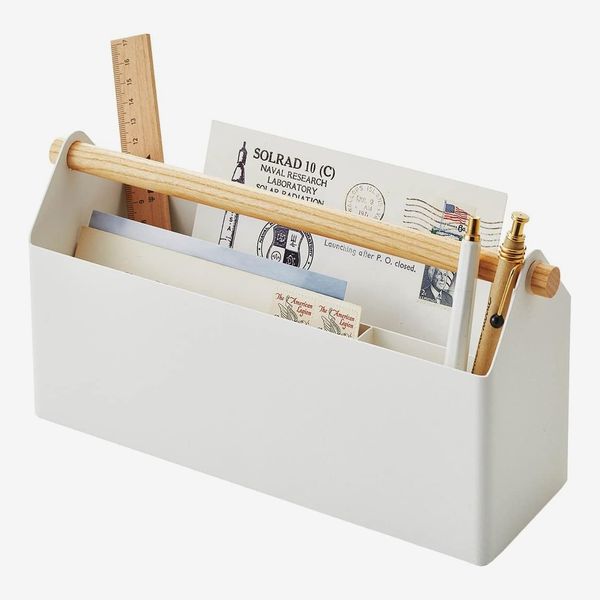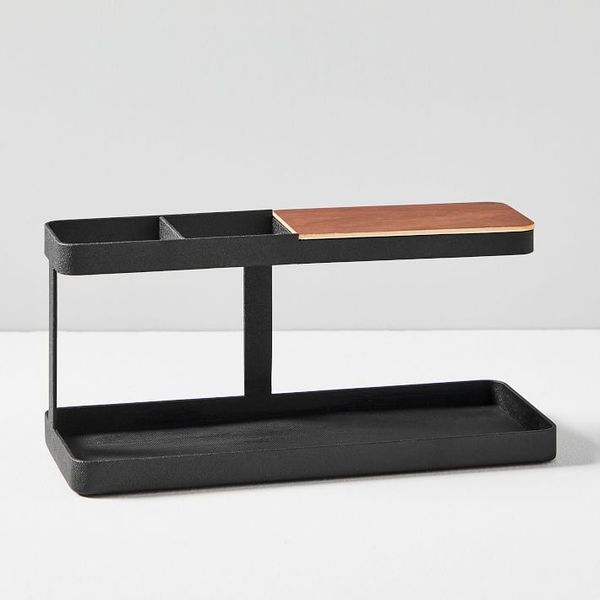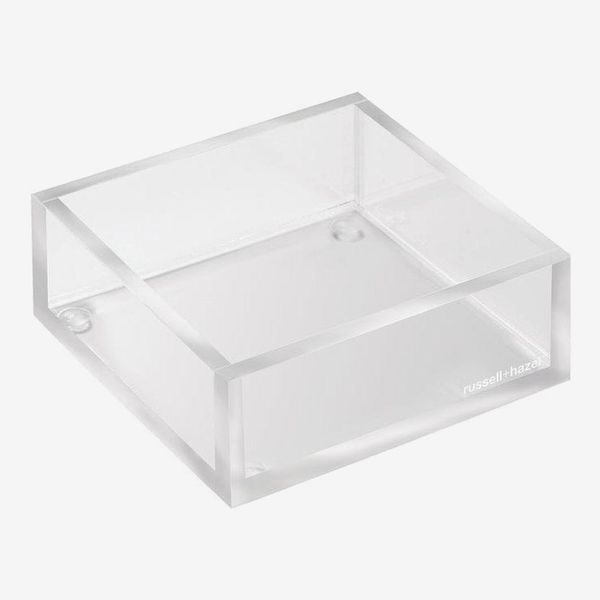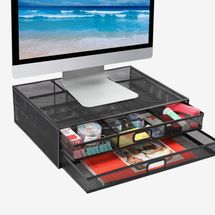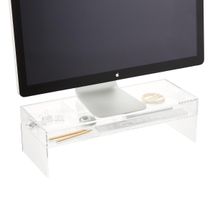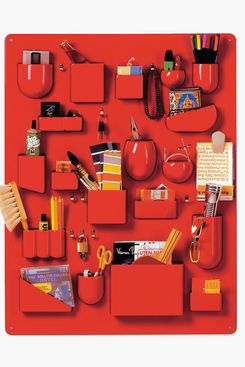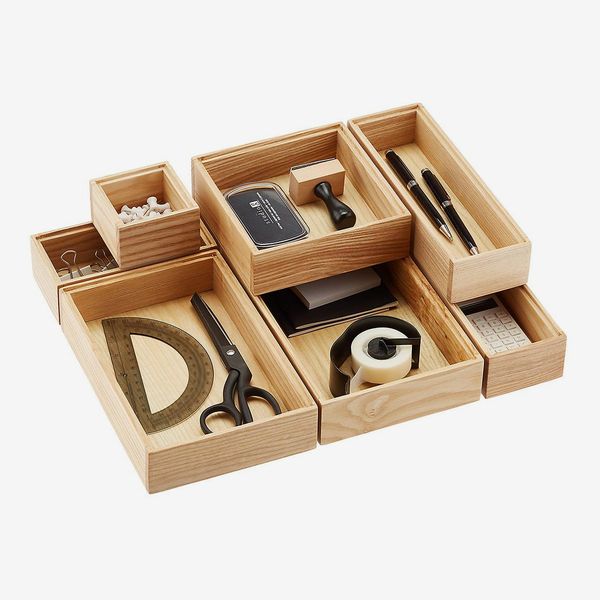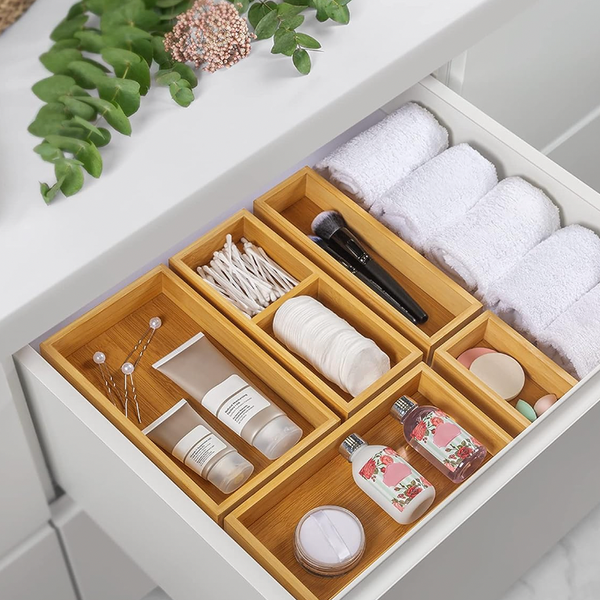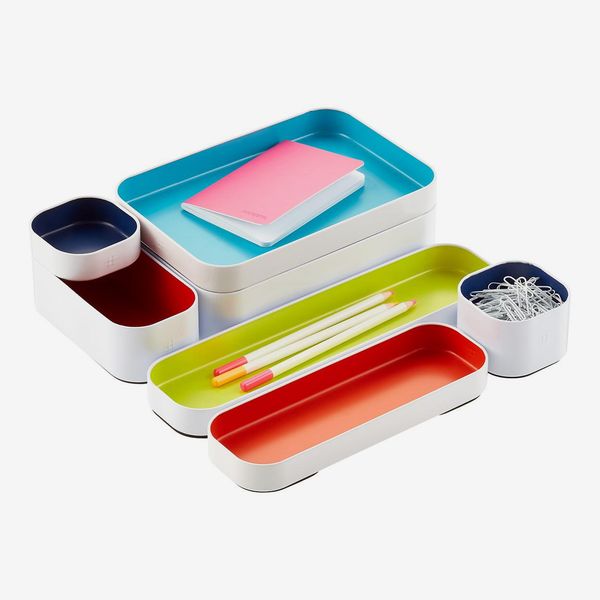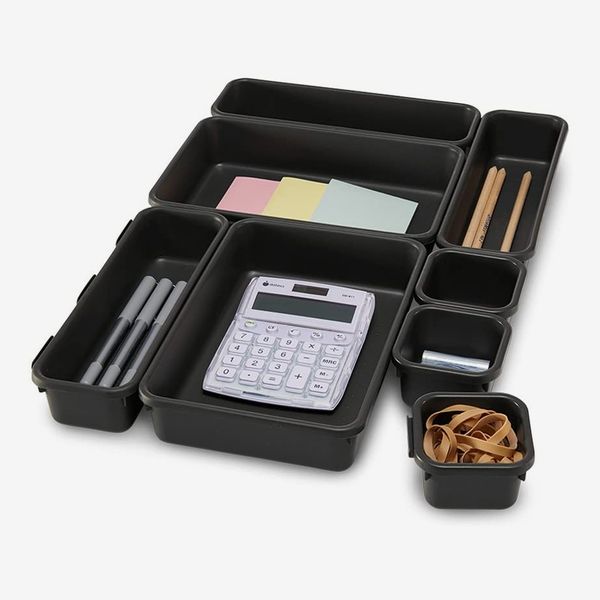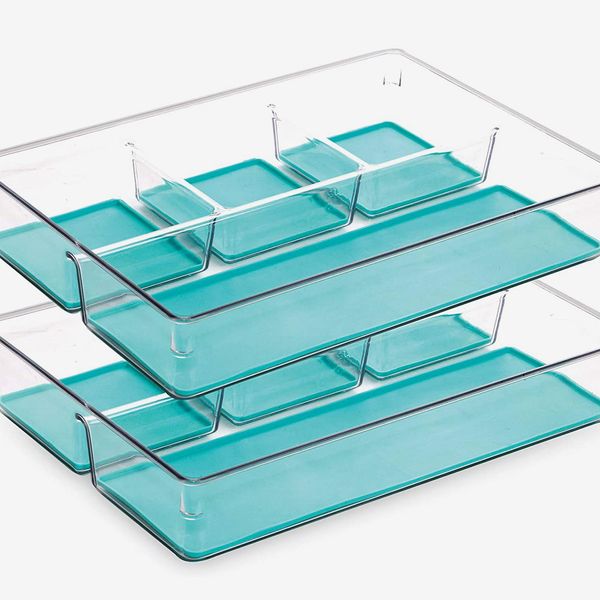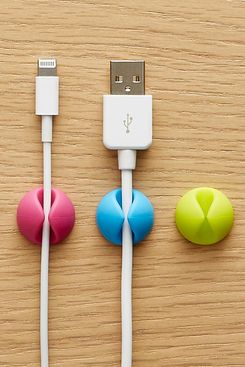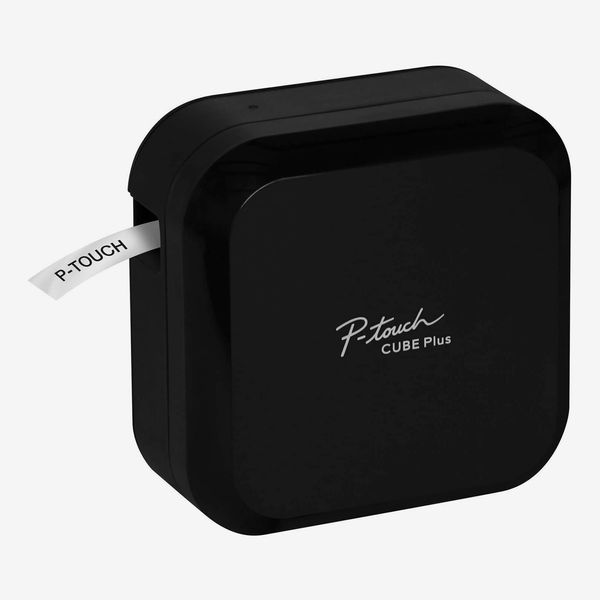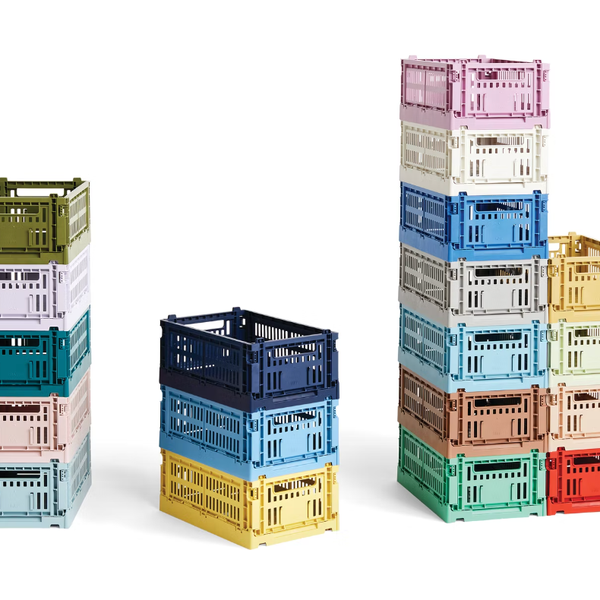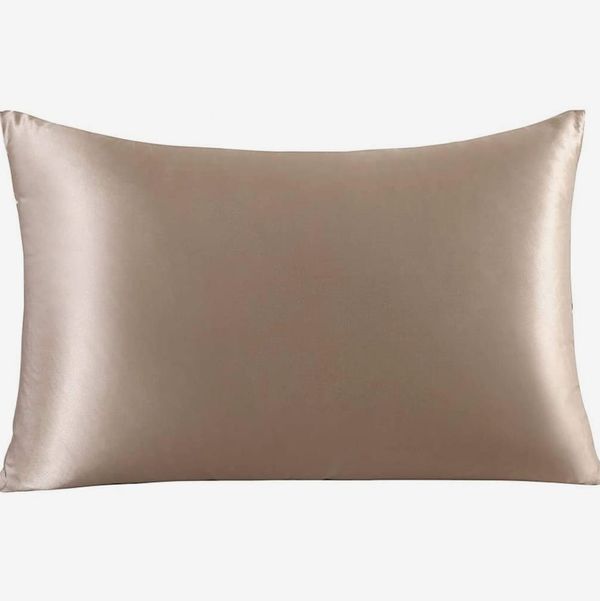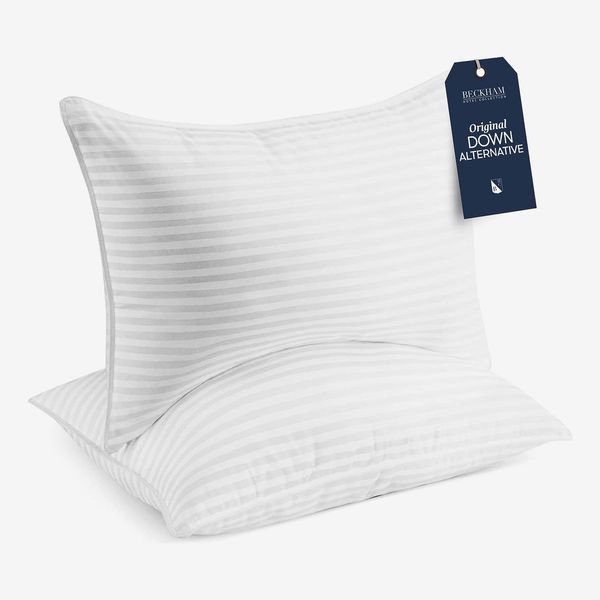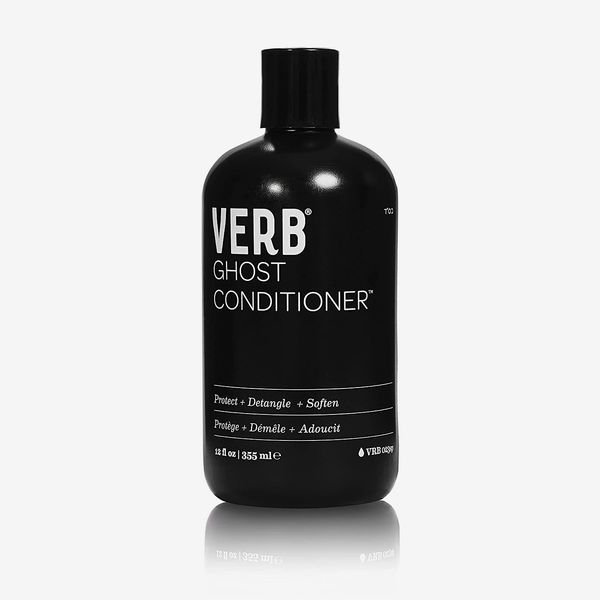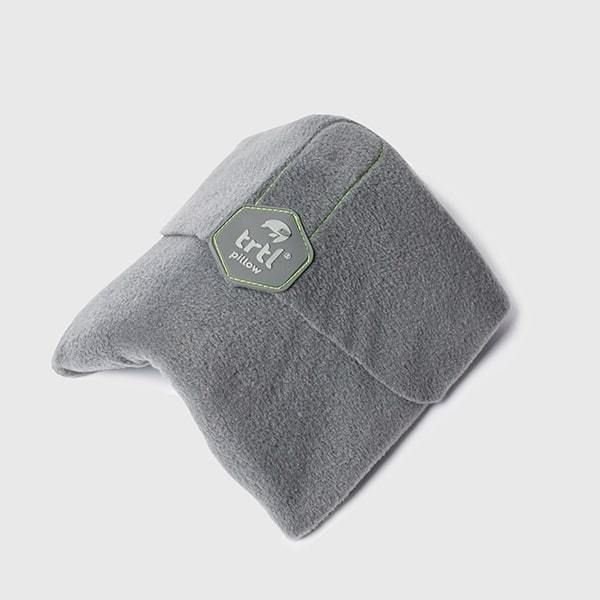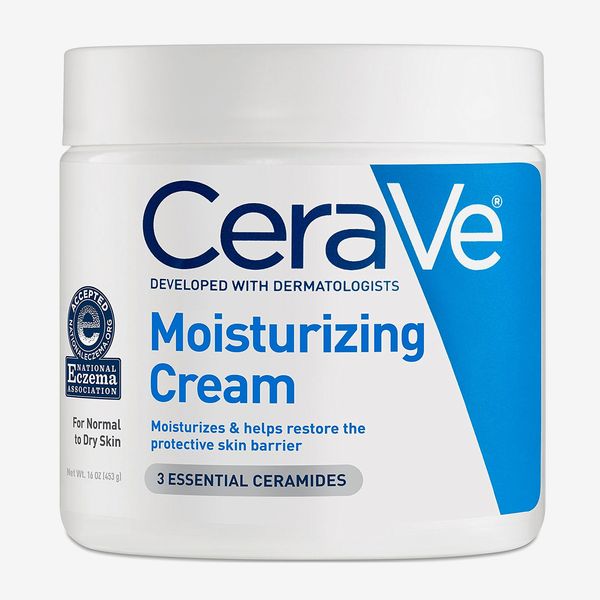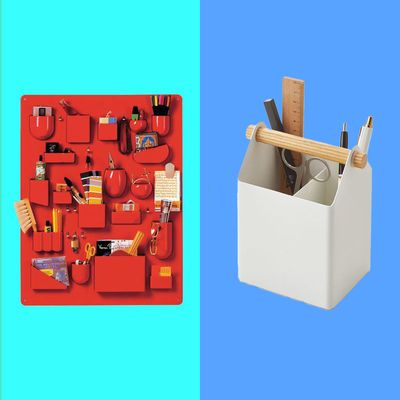
In this article
We hate to be the ones to say it, but you’re going to have to put your swimsuits and sandals away for the season — plus the sand toys, beach umbrellas, and all the other summer stuff that’s in a big heap by the door. The whole process of returning to the real world in September can be a crazy-making puzzle, especially when you don’t have loads of closet space or a basement to toss everything into. So this week, we’re sharing home-organizational essentials to make the transition a little easier. It’s Straighten Out Your Space Week on the Strategist.
Organizing your workspace can feel like another dreaded to-do — whether you’re typing away in a contained cubicle or reining in a sprawling work-from-home arrangement. But it does have to be done, or you might lose those meeting notes the boss will unavoidably ask for. Take it from Allison Dunn, the founder of Neat Rules: “You want to get rid of clutter so that you can really focus on the things you need to use on a day-to-day basis.” Dunn suggests keeping only what you need and making sure those essentials are accessible — you shouldn’t have to reach too far for your favorite pen. To make sure there’s a place for everything (and as the saying goes, to keep everything in its place), we asked professional organizers about what tools they use to keep their desks in order. And since we have a robust archive of home-organization stories, we mined those, too, for longtime Strategist favorites. The resulting recommendations below are organized into five categories, starting with desktop trays and ending with miscellaneous tools like cable clips.
Best desktop trays
The biggest complaint professional organizer Rolanda Lokey gets from clients has to do with paper: bills, unopened mail, and loose Post-its can collect in a heap that’s hard to sort through. Her top piece of advice is to use a three-tiered tray, which allows for the easy categorization of urgent, midterm, and long-term documents. “Once you get papers contained, your desk looks a lot neater,” she promises. This version from Simple Houseware is made from a steel mesh, which happens to match “with just about every décor scheme,” Lokey says.
Britnee Tanner, a professional organizer, likes the look of these colorblocked nestable trays from Open Spaces. The three-piece set includes small, medium, and large trays made of mixed materials (wood, plastic, aluminum) in delightful hues like dark green and light pink. “They’re really lovely visually,” she says. These are meant for those items that might not have a place of their own otherwise — think keys and AirPods. Tanner likes their versatility as well: You can separate all three to use for different items or keep only two nested and use the third by itself.
“Being able to see what you have means you’re constantly reminded of the stuff that needs to get thrown out or dealt with,” says Queer Eye’s Bobby Berk. That’s one of the reasons he keeps chargers, lip balm, hair clips, and hand sanitizer contained within this tray instead of inside of a drawer. “I find that when you use drawers, the stuff that goes in it is never seen again.” So “the tray has more than an aesthetic purpose — although the brass is really beautiful,” he adds.
Or, if you’re searching for something low-profile (and high-personality), proclaim your love of unusual aspect ratios and the “True Happiness Is Found Through Satan” plot with this desktop tray by the merch maximalists at production company A24. It’s around five inches by seven inches in size — ideal for a small notepad or the tiniest planner. You could even use it as a coaster, as the tray is dishwasher-safe (it’s made from fiberglass in collaboration with “the great American tray manufacturing institution” Cambro) in case you ever have a coffee spill.
If you need something high-capacity, this tray not only holds files, but iPads and folders. There are slots for non-letter-size papers as well. Lokey likes that the multi-compartment mesh organizer has space for pens, pencils, and other small supplies to boot.
Best filing systems
Those drowning in paperwork should get themselves a proper filing system. Brennan Reid, owner of Aristotle Organizing, prefers wall-mounted styles as they “clear a desk to allow more space, not only giving it a cleaner look, but giving you more space to work with.” He also believes that visible filing systems are better than filing cabinets as a visual reminder to keep works-in-progress catalogued. This version from Staples’ in-house label can be hung on the wall or stand underneath a desk, while its smaller size “forces you to keep your current work files limited.”
If you don’t have open wall space — or you would rather keep office supplies confined to your worktop — here’s another file holder that stands on a desk. It comes recommended by Beth Penn, founder of Bneato Bar. Combined with standard hanging folders, it functions as a portable filing cabinet to keep piles of papers tidy and accessible.
Dunn and Penn agree that magazine holders are great alternatives for organizing files because they can stay on your desk or be stored on a nearby bookshelf. (Penn keeps hers in a kitchen cabinet — her kitchen doubles as a home office — “so they’re not out and annoying to everybody else that lives there.”) This handsome magazine holder from Bigso is a good bet for design-y types. Dunn likes that the brand’s line of organization tools includes coordinating letter trays and drawers, and interior designer Alex Kalita has described her Bigso magazine holder as a “workhorse” that has “stood the test of time.”
“Sure, you can use them to store old issues of New York,” says Jessica Decker of Become Organized of this set of magazine racks. But there’s really no limit to how you use them — they’ll hold reference manuals, coloring books, or even printed-out recipes just as well, she suggests. These organizers are made from plastic, so they’re sturdier than the traditional cardboard ones.
This architectural file holder can add order to those sheets “floating around on your desk,” according to Tanner. “It disappears [so] you just see neatly arranged paper.” It’s especially practical for kids’ craft paper to separate by color and type.
Likewise, these sculptural acrylic bookends serve as an “elegant solution” to a “zine problem,” according to Strategist writer Erin Schwartz, by stopping the staple-bound booklets from getting lost between Schwartz’s larger books. You might sort mail or store loose-leaf printer paper in the slots of crystalline acrylic, too.
Though a number of organizers we spoke to argued against having a filing cabinet, a few admitted that they can be useful for people without a ton of storage space or who need to archive documents they don’t refer to very often. Dunn pointed to this slim three-drawer model as an inoffensive and not-too-unwieldy solution. Its sleek design is short enough to fit under most desks, but it has a bottom drawer deep enough for hanging file folders. The cabinet won’t take up much floor space, either, at just over a foot wide.
A filing-cabinet alternative of sorts, this affordable wheeled cart — another favorite of Dunn’s — can store not-as-frequently used files or supplies. The wheels make it easy to roll around (and move out of sight, if need be), and the cart’s top section allows for hanging file folders, while its bottom mesh drawers can accommodate almost anything else you need to tuck away.
Best office-supply organizers
Once you’ve got your paperwork organized, you’ll want to make sure your smaller items are in order. Echoing Dunn, Daniel Loya of Spaces Transformed advises that the things you can see are the things you will use. The simplicity of this streamlined, to-the-point organizer is what makes it appealing. He likes that there are three drawers and a shelf within the tiered design to store all sorts of essentials “in an orderly way.” Plus, the bamboo helps bring a bit of “nature to a sterile office area,” Loya praises.
Tanner emphasized the importance of using well-designed desk organizers to avoid distracting visual clutter. One of her examples of a functional but good-looking solution is this organizer from Yamazaki. (The Japanese homeware company happens to be a longtime Strategist favorite.) It’s available in two versions, one called “pens” and the other “caddy.” The latter has larger compartments for things like a calculator (if you’re still analog), envelopes, scissors, a letter opener, and highlighters that might be frequently used, Tanner says.
Or go for this even more minimalist desk “bar.” Loya likes the clean lines of the open-concept organizer, which make it look like a work of art. He notes that the stand can hold eyeglasses and smartphones (especially if you have one just for work) alongside the standard rulers and fountain pens.
Berk and professional organizer Laura Cattano both approve of Russell and Hazel’s acrylic collection, which includes everything from a tray and pencil holder to the bookend Schwartz recommended above. These allow for a sort of “build your own organizer” approach instead of getting one that’s already set up, Berk explains. The modular “bloc” can perch just about anywhere, and “because you can stack the containers, you get the same function without taking up a lot of surface area,” Berk adds. Since these are see-through, he suggests using them to show off interesting-looking supplies, like brass paper clips or cute push pins. Cattano is also a fan of the brand’s file box (as seen in our guide to storage bins) that doesn’t look corporate.
To max out the space where your monitor stands, Lokey and Dunn suggest risers that double as office-supply organizers. “In terms of innovation, this is actually kind of new,” Lokey says. (A search of “monitor stands” turns up mostly plain-looking ones without extra storage space.) Lokey likes this mesh model that comes with two drawers, with the top drawer divided into three compartments, while Dunn favors a futuristic acrylic version with separate sections for highlighters and gadgets.
If you’re open to splurging on an organizational system, the Uten.Silo is a classic, designed by Dorothee Becker in the 1960s. Its maker, Swiss furniture company Vitra, is known for its design-y home goods, and this organizer fits that profile while providing caddies for pens, scissors, and notepads, along with hooks for hanging other tools. Though the organizer is still in production, you can sometimes find it for cheaper (and secondhand) on sites like 1stdibs or eBay. You might have luck on New York Craigslist, too.
Best desk-drawer organizers
Even as their contents are out of sight, drawers still should be organized so “things don’t get too cluttered because they’re compartmentalized,” Lokey says. Reid adds that drawer organizers help keep those missable necessities separated from each other. These from the Container Store can “create a physical barrier between each office supply,” allowing you “to find what you need quickly,” he says. Because they’re stackable, you can tailor them to the drawer you have, including deeper-set ones that don’t slide out as much. “It’s all about taking advantage of the entire space,” Reid recommends. (But if you won’t be filling a whole drawer edge-to-edge, a tub of Museum Gel will help hold stand-alone organizers in place.)
Another of Decker’s recommendations to “corral junk” in a desk’s drawers is this storage-box set. You can decide between three-, five-, and eight-piece sets. “I Tetris them together,” she explains. The leftover space where a box won’t fit becomes its own divider within the drawer. As a rule, she doesn’t like mixing and matching different dividers for cohesion’s sake. (Plus, the matching pieces of this under-$30 set will look more like a built-in.) The boxes prevent batteries, bandages, pens, and sticky notes from shifting around, Decker promises. You might get a business-card holder out of one of them, too.
Slightly shallower and more colorful are these organizers that Loya loves for being “functional and fun.” He mentions that “adding color to your drawers can have a cheerful effect on you each time you open them.” You can color-code supplies this way as well. The modular pieces are sold separately, and they’re stackable too. So, as Loya says, “There are endless ways you can arrange the compartments.”
One downside to the above drawer organizers is that buying each piece adds up. This eight-piece set is a budget-friendly option recommended by Lokey. You can stash your pens with other irregularly shaped office supplies. The bins interlock, which keeps them from sliding around and makes it easy to configure them to fit most any drawer.
For an acrylic look, Lokey suggests this two-pack of drawer organizers that have four compartments each, all of which are lined with grippy rubber. The organizers also have rubber feet to prevent them from moving around every time you open a drawer. And at about $6 apiece, they’re super affordable.
Miscellaneous desk-organizing tools
It’s not just papers and writing utensils that can clutter a desk — computer cables and chargers can also quickly make a space look messy. For “unruly” cords that are always “slipping off your desk and out of reach,” Loya recommends these adhesive cable clips. “They firmly hold cords in place,” he says, and “the self-adhesive backing can be easily removed” should you ever want to move them. (Meanwhile, if your cords also have a lot of extra length, former Strategist tech writer Jordan Bowman swears by velcro cable ties to keep them in neat loops.)
Labeling is another key way to keep tidy. Dunn’s go-to label-maker is Brother’s P-Touch Cube Plus (our recommendation for the best label-maker with Bluetooth connectivity), which is “really easy to use,” especially for being smartphone-compatible. Dunn appreciates its compact size and font choices. Brother also makes a similar version that costs less than $50; the cheaper label-maker prints half-inch-wide labels, while the pricier “Plus” makes one-inch-wide labels.
The good-looking Colour Crates from Danish interior-design house Hay earned the title of “best stackable bins” in our storage-bins guide, and they can hold just about anything. Though you do have to spring for the lids and wheels separately, I thought these add-ons were worthwhile extras when I tested them myself, as the lids help keep dust out and the wheels meant I could roll a stack wherever I wanted. The crates can collapse whenever they’re not needed, too. The small version could sit on top of a desk, while the medium and large sizes could be stored underneath.
Additional reporting by Maxine Builder and Lauren Ro
The Strategist is designed to surface the most useful, expert recommendations for things to buy across the vast e-commerce landscape. Some of our latest conquests include the best women’s jeans, rolling luggage, pillows for side sleepers, ultra-flattering pants, and bath towels. We update links when possible, but note that deals can expire and all prices are subject to change.
Every editorial product is independently selected. If you buy something through our links, New York may earn an affiliate commission.

